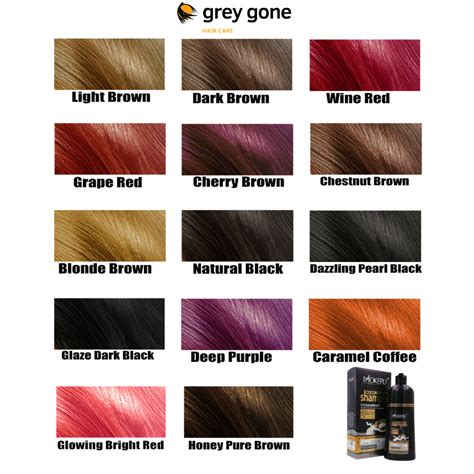Introduction
Human hair color is an intricate and fascinating aspect of human biology, contributing to our unique appearance and serving as a canvas for self-expression. From the rich, raven hues of black hair to the sun-kissed strands of blonde, the spectrum of hair colors found among humans is vast and alluring. Understanding the science behind hair color not only enhances our appreciation for this beautiful trait but also opens up a wealth of possibilities for hair care and enhancement.

The Genetics of Hair Color
The inheritance of hair color is a complex process governed by multiple genes. Melanin, the pigment responsible for hair color, exists in two primary forms: eumelanin (dark pigment) and pheomelanin (red pigment). The interplay of these pigments, along with variations in gene expression, results in the diverse array of hair colors.
According to researchers at the University of Pennsylvania, genetics account for approximately 98% of hair color variation within a given population. The MC1R gene, located on chromosome 16, plays a pivotal role in determining eumelanin production. Individuals with darker hair typically have more active MC1R genes, leading to higher levels of eumelanin.
Factors Influencing Hair Color
Age: As we age, our hair follicles produce less melanin, resulting in a gradual lightening of hair color. Gray hairs appear when the hair follicles stop producing melanin altogether.
Sun Exposure: Prolonged exposure to ultraviolet (UV) radiation can lead to the breakdown of melanin, resulting in lighter hair color. However, excessive sun exposure can also damage hair, making it dry and brittle.
Hormones: Pregnancy, menopause, and thyroid disorders can affect hair color by altering hormone levels, which influence melanin production.
Lifestyle Factors: Diet, overall health, and stress levels can also impact hair color, albeit to a lesser extent.
Cultural and Societal Significance
Throughout history, hair color has held cultural and societal significance. In many cultures, dark hair was associated with power and seriousness, while light hair was often perceived as youthful and alluring.
In recent decades, hair coloring has become increasingly popular as a form of self-expression and personal style. People from all walks of life use hair dyes and other products to enhance their natural hair color or change it entirely.
Hair Color Statistics
According to the American Academy of Dermatology:
- Approximately 70% of the world’s population has dark hair.
- Blonde hair is most common in Northern Europe, with a prevalence of around 40% in Scandinavian countries.
- Red hair is the rarest natural hair color, occurring in approximately 1-2% of the population.
Applications beyond Aesthetics
The study of hair color has applications beyond the realm of aesthetics. In forensic science, hair color can provide valuable clues in criminal investigations. Researchers are also exploring the potential of hair color to diagnose or monitor health conditions such as vitamin deficiencies and thyroid disorders.
Innovative Hair Color Solutions
Biomimetic Hair Color: Scientists have developed biomimetic hair colors that mimic the natural structure and properties of human hair. These colors offer long-lasting results without damaging the hair shaft.
Smart Hair Colors: Researchers are working on creating smart hair colors that can change color in response to environmental stimuli such as light, temperature, or pH.
Hair Color for Hair Health: Some hair colors are formulated with nourishing ingredients that promote hair growth, strengthen strands, and reduce breakage.
Effective Strategies for Hair Color Care
-
Choose a color that complements your natural skin tone: Consider your skin’s undertones (warm or cool) when selecting a hair color to create a harmonious look.
-
Use high-quality hair dyes: Professional-grade dyes tend to be more gentle on hair and provide longer-lasting results.
-
Follow the manufacturer’s instructions carefully: Adhering to the recommended application time and mixing ratios ensures optimal results.
-
Use color-protecting shampoos and conditioners: Products specifically designed for color-treated hair help preserve vibrancy and prevent fading.
-
Limit heat styling: Excessive heat from styling tools can damage colored hair, making it more prone to breakage and fading.
-
Touch up roots regularly: Maintaining a consistent hair color requires regular root touch-ups to prevent visible regrowth and maintain a polished look.
Tips and Tricks for Hair Color Enhancement
-
Add highlights or lowlights: Strategic placement of lighter or darker shades within your hair can enhance its depth and dimension.
-
Try balayage: This freehand painting technique creates a natural-looking, sun-kissed effect.
-
Use color-enhancing treatments: Glazes and masks can enhance the vibrancy and shine of colored hair.
-
Experiment with temporary hair color: Semi-permanent or temporary dyes allow you to experiment with different colors without the commitment of a permanent change.
Pros and Cons of Hair Coloring
Pros:
- Enhances self-expression and personal style
- Conceals gray hair and rejuvenates appearance
- Creates new hair dimensions and visual interest
- Can be used to camouflage hair loss
Cons:
- Can damage hair if not done professionally
- Requires regular maintenance and touch-ups
- Certain colors can fade quickly
- Some hair colors may contain allergens or harsh chemicals
Conclusion
Human hair color is a captivating and multifaceted trait that plays a significant role in our appearance and identity. Understanding the genetics, cultural significance, and practical applications of hair color empowers us to make informed decisions about hair care and enhancement. Whether you embrace your natural hue or seek to transform it through coloring, the vast array of options available allows you to express your unique style and embrace the vibrant palette of human hair color.
